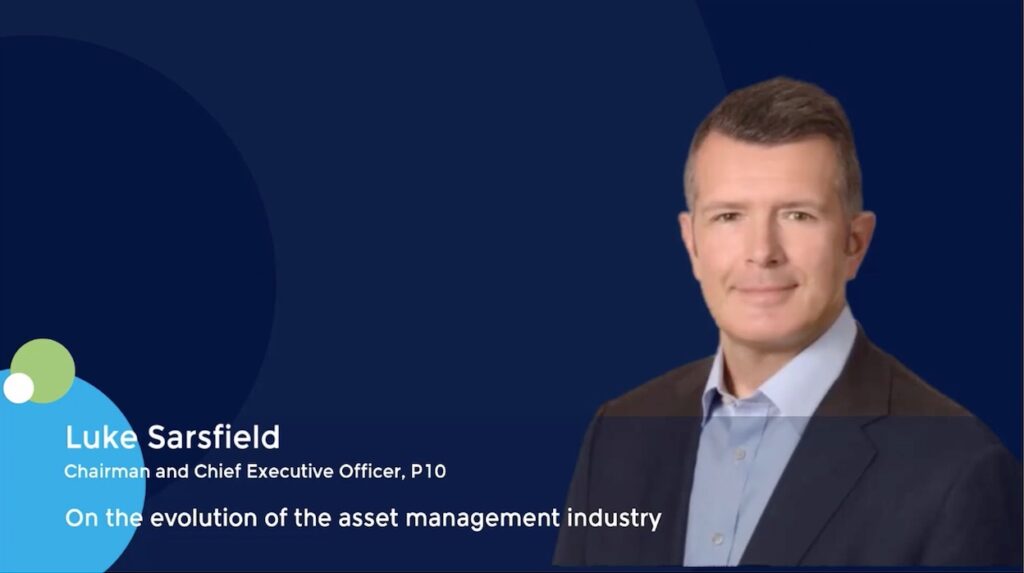Australia buyouts: Tax office targets offshore deal structures
- Government is scrutinising investment structures for evidence of tax evasion
- Global GPs must mount pre-emptive defences through transaction paper trail
- Singapore-Australia route is still valid provided investors can show substance
A disputed USD 628m tax bill dated 2009 sent the Australian Tax Office (ATO) on a multi-year but ultimately unsuccessful quest through the jurisdictions that featured in TPG Capital’s investment in local department store chain Myer. Fifteen years on, as global private equity firms face increased scrutiny of the offshore structures that underpin their buyouts, advisors are feeling a sense of déjà vu.
“It’s a bit like back to the future, with ATO sending out questionnaires and trying to understand what deal structures looked like,” said Sean Keegan, a managing director and Australia country leader for tax at Alvarez & Marsal. “Private equity and infrastructure are under the spotlight.”
Back then, ATO claimed that TPG’s structure – proceeds from Myer’s IPO went to the Netherlands to Luxembourg to the Cayman Islands-domiciled fund – was a tax dodge. It claimed the cash was business income, not capital gain, and therefore subject to local tax. It also proposed to look through the offshore entities, as well as the double taxation agreements (DTAs) protecting them, and target LPs in the fund.
Though frustrated in its quest, ATO spent several years peppering PE firms with information requests to safeguard against a repeat occurrence. Meanwhile, GPs abandoned the European route, preferring to structure investments through Singapore, which had a DTA with Australia and where they could easily accumulate the substance – local spending and employment – required to access treaty benefits.
Fast forward to the present and ATO is ratcheting up its questioning once again. Foreign Investment Review Board (FIRB) approval of deals is conditional on conforming with an enhanced disclosure regime designed to track activities during an investment that may impact tax liability on exit. According to Keegan, there are now 14-15 standard enquiries, a threefold increase from nine months ago.
Claims of substance are being probed more deeply and the government is willing to show its teeth if not satisfied. In 2022, a freezing order was placed on part of the proceeds from the sale of utility AusNet amid fears of capital flight because the seller, State Grid Corporation of China, disputed the ATO’s capital gains tax claim. Private equity investors in similar situations may face the same consequences.
“FIRB is pushing for more real-time review by ATO. It’s not just on entry and exit, but through the hold period. If there is any restructuring, any movement of assets, any new debt, any dividend recaps, they want notification in advance,” said Toby Eggleston, a M&A-focused partner at law firm Herbert Smith Freehills (HSF), adding that deal friction – in terms of time and cost – has risen accordingly.
“As much as the federal treasurer is trying to say we are open to foreign investment, Australia can be a challenging jurisdiction because of oversight by a well-resourced and well-informed regulator.”
Moreover, to the extent that the Singapore-Australia route is being scrutinised, Singapore is looking – independently – to make its regime more robust. Substance requirements for DTA network access are expected to be raised, so GPs may find they are effectively getting squeezed at both ends.
Regulation creep
Australia’s significance to the region as an investment destination is unquestioned. It has accounted for an annual average of 12.6% of all capital deployed over the past 10 years, but that share rises to 28.8% for buyouts alone. In 2021, when a record USD 145.5bn went into Asia buyouts, Australia accounted for over 40%, underpinned by a string of large infrastructure and utilities transactions.
A drop-off in mega deals in the past 18 months has brought down the headline number, but the market is still viewed favourably. “With China off the radar, everyone wants to deploy in Australia, Japan, South Korea, and India,” said Darren Bowdern, a partner in KPMG’s Hong Kong tax practice. “Yet theoretically, if they ignore the Singapore platform and tax treaty, you’re looking at a 30% tax on investments.”
Preventing escalation from theoretical to actual doesn’t necessarily involve investors taking different courses of action provided existing processes are robust. Rather, they must ensure the paper trail that captures what decisions were made – and when, by whom, and why they were made – is complete.
“It’s not about changing overall structures but thinking about the documentation you need to support the commercial intention of the Singapore platform and to be prepared for a review,” said Keegan of Alvarez & Marsal. “No one is backing away from deals because of this. It just means from a tax perspective we need to be involved earlier and think strategically about how we engage with the ATO.”
Such engagement already happens to a degree, which is why Australia-based advisors claim they haven’t been blindsided by developments of the past nine months. Leadership changes within ATO’s private equity team are described as having given new impetus to an established anti-treaty shopping agenda – and Australia’s revised foreign investment framework, unveiled in May, should be seen in this context.
Rising national security threats due to an intensification in geopolitical competition were the focal point, with the government announcing a two-track approach to deal assessment. Approvals for low-risk transactions will be streamlined, ideally to as little as 30 days, while high-risk situations will be placed into a separate stream in anticipation that they will be scrutinised more closely.
This should be a net positive for private equity. Major GPs are known to Australian regulators; they are financially motivated, representing distributed and largely passive LP bases; and they are less likely to be involved in areas identified as high risk such as critical infrastructure, minerals, and technology.
But FIRB’s remit is national interest, not just national security, and deals could be deemed high risk because they pose a threat to the tax base. “A particular focus is on investments that are structured through effective low or no tax jurisdictions where there is limited relevant economic activity taking place,” the framework stated in a section devoted to taxation.
It outlined actions that might be regarded as avoidance tactics, including internal reorganisations and intragroup transactions, pre-sale structuring, and offshore migration of assets that might deny Australia tax revenue. The use of related party financing to reduce local tax exposure was also highlighted.
“The policy framework is a published articulation of something practitioners have been aware of for six to 12 months,” said Jeremy Low, a partner who covers M&A at law firm Allens. “None of it was a surprise. It is just confronting when you see it in writing, which suggests the treasurer isn’t shy about it.”
There is a political aspect to the push. Jim Chalmers, the federal treasurer responsible for FIRB, is part of a left-leaning Labour administration that has repeatedly talked of levelling the competitive playing field for Australian companies and ensuring foreign investors pay their “fair share” of tax.
Several industry participants place foreign investment reforms in the context of efforts to widen the tax base. These range from thin capitalisation legislation that limits tax deductions on debt instruments to an expected expansion of capital gains tax to renewable energy facilities by disregarding the argument that wind turbines – because they are severable from land – shouldn’t be considered taxable property.
Moreover, this isn’t a solely Australian phenomenon. Neil Synnott, chief commercial officer for Asia at fund administrator IQ-EQ, drew comparisons with the EU Anti Tax Avoidance Directive, which focuses on similar characteristics to those outlined in the foreign investment framework. The framework itself states that Australia’s approach reflects international trends on preventing flight to low-tax jurisdictions.
Lines of enquiry
Asked about situations that have previously led to ATO discomfort, Synnott pointed to structures where multiple Delaware, Cayman, European, Channel Islands entities sit above a Singapore entity that invests in an Australian corporate vehicle. But complexity is not always the cause. Advisors claim they still see Singapore corporate structures that are tax-resident but accompanied by little or no substance.
Most global and pan-regional private equity firms investing in Australia via Singapore maintain offices in the latter because it serves as a broader base of operations. A Cayman-domiciled fund might invest across the region from a Singapore entity, leveraging the country’s DTA network and tax incentives available to a locally licensed fund manager that acts as a sub-advisor to the main fund.
“Post-COVID, we’ve seen more flow from non-Asia-based managers,” said Han Ming Ho, an investment funds partner at Reed Smith. “It’s not just for investment in Southeast Asia and South Asia but pan-regional. Australia isn’t one people obviously think of, but there is a logic to using Singapore as a base. Increasingly, we see funds domiciled and managed by these new entrants out of Singapore as well.”
Even though such bases would normally meet local substance criteria, ATO will likely still ask plenty of questions, advisors warned. Areas of focus would extend from the identity of LPs to functions performed on the ground, including those by individuals on the investment committee for the Singapore entity – whether they have enough experience to participate in decisions and whether they have power of veto.
“They look at the whole operating model and structure of a fund,” said Bowdern of KPMG. “While many of the large global private equity firms have teams in Singapore, they are largely back office. The deal teams are in-country, and it is possible that investment committees for the main funds, which comprise people from all over, have no one in Singapore. Where decisions are taken is an issue.”
Then there’s the line of questioning intended to track changes in an investment – planned at the outset or during the hold period – that may impact how proceeds are taxed on exit: the purpose of structures, movement of assets and intellectual property, and use of debt.
Enquiries do not end with the GP. Keegan of Alvarez & Marsal added that ATO’s private equity unit also wants to establish lines of dialogue with portfolio companies. Details of the planned new audit programme have yet to emerge, but the objective is to deepen understanding of investment dynamics.
“It’s about understanding what has changed. If the deal team has been helping a portfolio company take out expenses, they want to know the level of involvement,” Keegan said.
Among the principal challenges is continuous disclosure, which involves collecting and collating board papers, advisory memos, presentations, and diagrams pertaining to taxation. Even the practice of giving advice under legal privilege – which means there is no obligation to share information with ATO – is currently under review in terms of its application to tax, noted HSF’s Eggleston.
Once ATO has access to this paper trail, it draws its own conclusions regarding tax liability. The timeline is dictated by a requirement that investors give authorities at least 60 days advance notice of an exit.
“Rather than wait until a Myer-type situation happens and try to unscramble the egg, they want you to give as much notice as possible before you implement the transaction, so they can understand the tax implications as early as possible,” said Low of Allens.
Singapore swing
Upheaval on the Australian side until recently contrasted stability in Singapore. Tax exemption schemes open to fund managers have seen little change in qualification requirements since they were introduced 15 years ago: having at least SGD 20m (USD 14.8m) in assets under management, making two local hires, and local business spending of SGD 200,000 per annum (rising to SGD 50m in AUM and three local hires for the next tier up).
However, Singapore’s budget statement in February indicated that these economic criteria would be revised. No further information was given, but industry participants think they know what is coming.
“We expect that substance requirements will almost certainly go up, not down,” said Joel Seow, an investment funds partner at Linklaters in Singapore. “We are also aware that there are ongoing soft consultations with the asset management industry, so hopefully what is eventually announced will not be a surprise to the industry. As with other changes in the past, we expect the regulator to take a balanced and pragmatic approach on this.”
Several explanations are offered for the change. Synnott of IQ-EQ links it to last year’s money laundering scandal involving foreign passport holders and the country needing to clean up its image. Others see it as symptomatic of a system that has reached critical mass. Singapore wants to attract a higher calibre of manager and charge a higher premium – in terms of local employment and investment – for access.
Global and pan-regional private equity firms won’t be priced out of using the Singapore-Australia route. According to Keegan, Alvarez & Marsal explored several alternative structures and jurisdictions only to conclude that a fully compliant Singapore remained the best option.
Almost regardless of the jurisdiction, closer scrutiny of investment structures by ATO is becoming a reality. And if international private equity firms want to remain active in Australia via offshore platforms, they have little option but to write off the additional time, expenditure, and inconvenience as a cost of doing business – or as a form of insurance against future investigations.
Asked if the ATO’s approach would lead to greater clarity or uncertainty of tax treatment by Australian authorities, Eggleston of HSF demurred. Documents like the foreign investment framework “give greater clarity that the ATO will be very vigorous in its reviews, and no one should be under any misapprehension that they would sail through easily,” he said.














